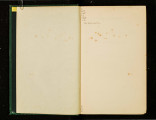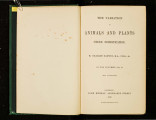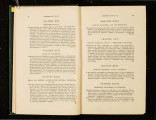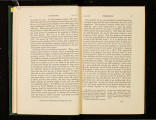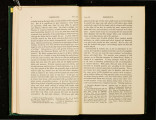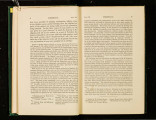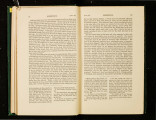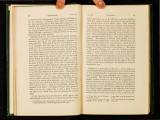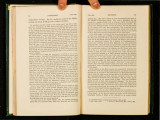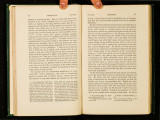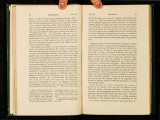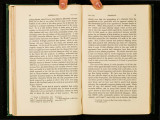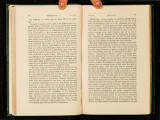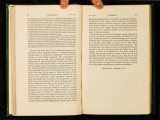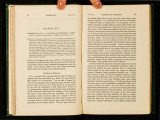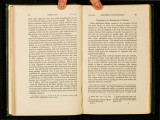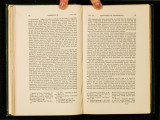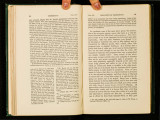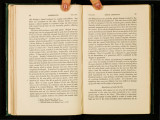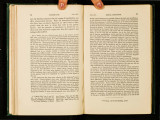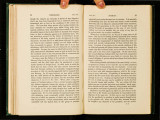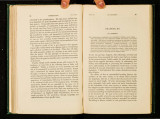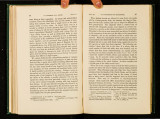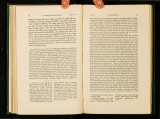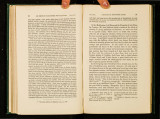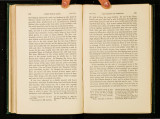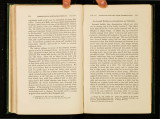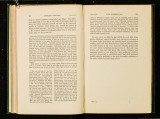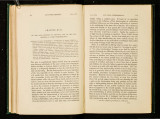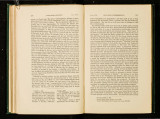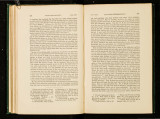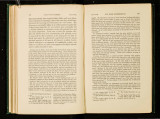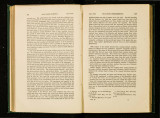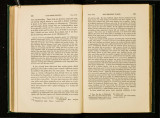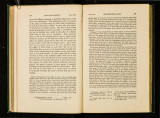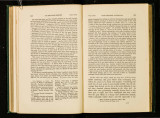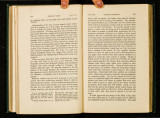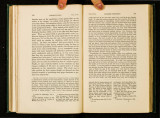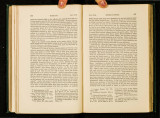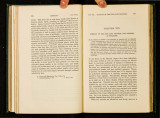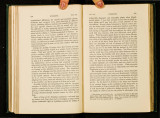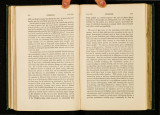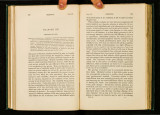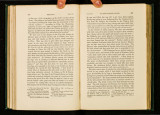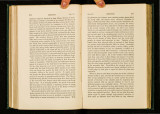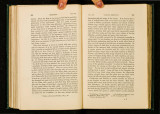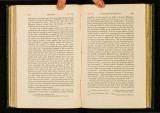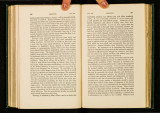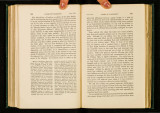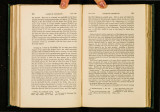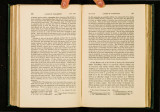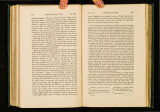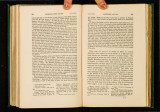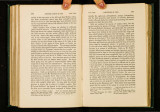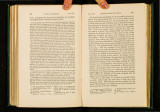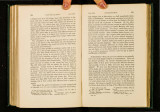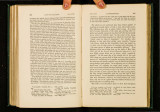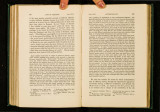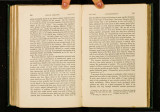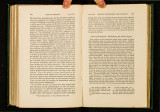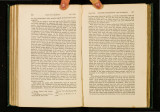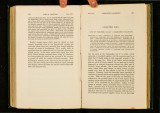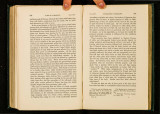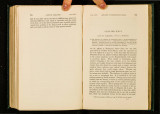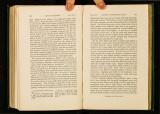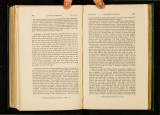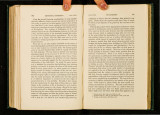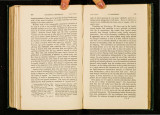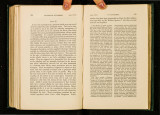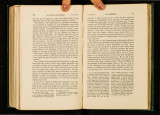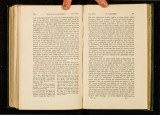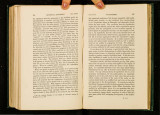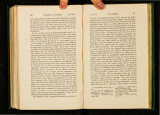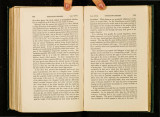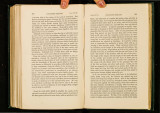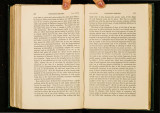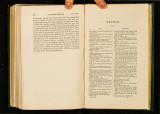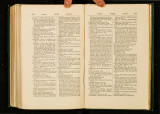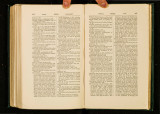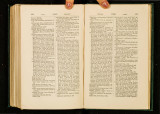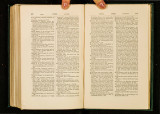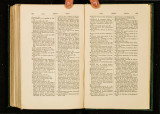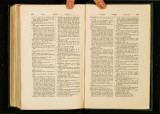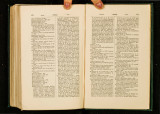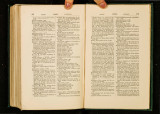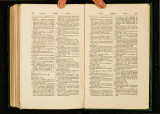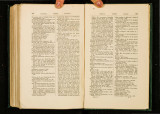| OCR Text |
Show 412 CONCLUDING REMARKS. CHAP. XXVIII. variable than those distinguishing species, tho~gh hardly more so than with certain protean species ; but th1s greater degree of variability is not surprising, as varieties have g~~erally b~en exposed within recent times to fluctuating conclitwns o~ hf.e, are much more liable to have been crossed, and are still m many cases undergoing, or have recently undergone, modification by man;s methodical or unconscious se~ectio~. Domestic varieties as a general rule cm·taml y d1ffer from each other in less important parts of their organisation than do species; and when important differences occur, they ~re seldom firmly fixed ; but this fact is intelligible if we cons1der man's method of selection. In the living animal or plant he cannot observe internal modifications in the more important organs; nor does he regard them as long as they are compatible with health and life. What does the breeder care about any slight change in the molar teeth of his pigs, or for an additional molar tooth in the dog; or for any change in the intestinal canal or other internal organ ? The breeder cares for the flesh of his cattle being well marbled with fat, and for an accumulation of fat within the abdomen of his sheep, and this he has effected. What would the floriculturist care for any change in the structure of the ovarium or of the ovules? As important internal organs are certainly liable to numerous slight variations, and as these would probably be inherited, for many strange monstrosities arc transmitted, man could undoubtedly effect a certain amount of change in these organs. ·when he has produced any modification in an important part, it has generally been unintentionally in correlation with some other conspicuous part, as when he has given ridges and protuberances to the· skulls ·of fowls, by attending to the form of the comb, and in the case of the Polish fowl to the plume of feathers on the head. By attending to the external form of the pouterpigeon, he has enormously increased the size of the CBsophagus, and has added to the number of the ribs, and given them greater breadth. With the carrier-pigeon, by increasing, through steady selection, the wattles on the upper mandible, he has greatly modified the form of the lower mandible ; and so in many other cases. Natural species, on the other hand, have been modified exclusively for their own good, to fit them for infinitely CHAP. XXVIII. CONCLUDING REMARKS. 413 diversified conditions of life, to avoid enemies of all kinds, and to struggle against a host of competitors. Hence, under such complex conditions, it would often happen that modifications of the most varied kinds, in important as well as in unimportant parts, would be advantageous or even necessary; and they would slowly but surely be acquired through the survival of the fittest. Various indirect modifications would likewise arise through the law of correlated variation. Domestic breeds often have an abnormal or semi-monstrous character, as the Italian greyhound, bulldog, Blenheim spaniel, and bloodhound amongst dogs,-some breeds of cattle and pigs, several breeds of the fowl, and the chief breeds of the pigeon. The differences between such abnormal breeds occur in parts which in closely-allied natural species differ but slightly or not at all. This may be accounted for by man's often selecting, especially at first., conspicuous and semi-monstrous deviations of structure. We should, however, be cautious in deciding what deviations ought to be called monstrous : there can hardly be a doubt that, if the brush of horse-like hair on the breast of the turkey-cock had first appeared on the domesticated bird, it would have been considered a monstrosity; the great plume of feathers on the head of the Polish cock has been thus designated, though plumes are common with many kinds of birds; we might call the wattle or corrugated skin round the base of the beak of the English carrier-pigeon a monstrosity, but we do not thus speak of the globular fleshy excrescence at the base of the beak of the male Oarpophaga oceanica. Some authors have drawn a wide distinction between artificial and natural breeds ; although in extreme cases the distinction is plain, in many other cases an arbitrary line has to be drawn. The difference depends chiefly on the kind of selection which has been applied. Artificial breeds are those which have been intentionally improved by man; they frequently have an unnatural appearance, and are especially liable to loss of excellence through reversion and continued variability. The so-called natural breeds, on the other hand, are those which are now found in semi-civilised countries, and which formerly inhabited separate districts in nearly all the European kingdoms. They have been rarely acted on by man's |




